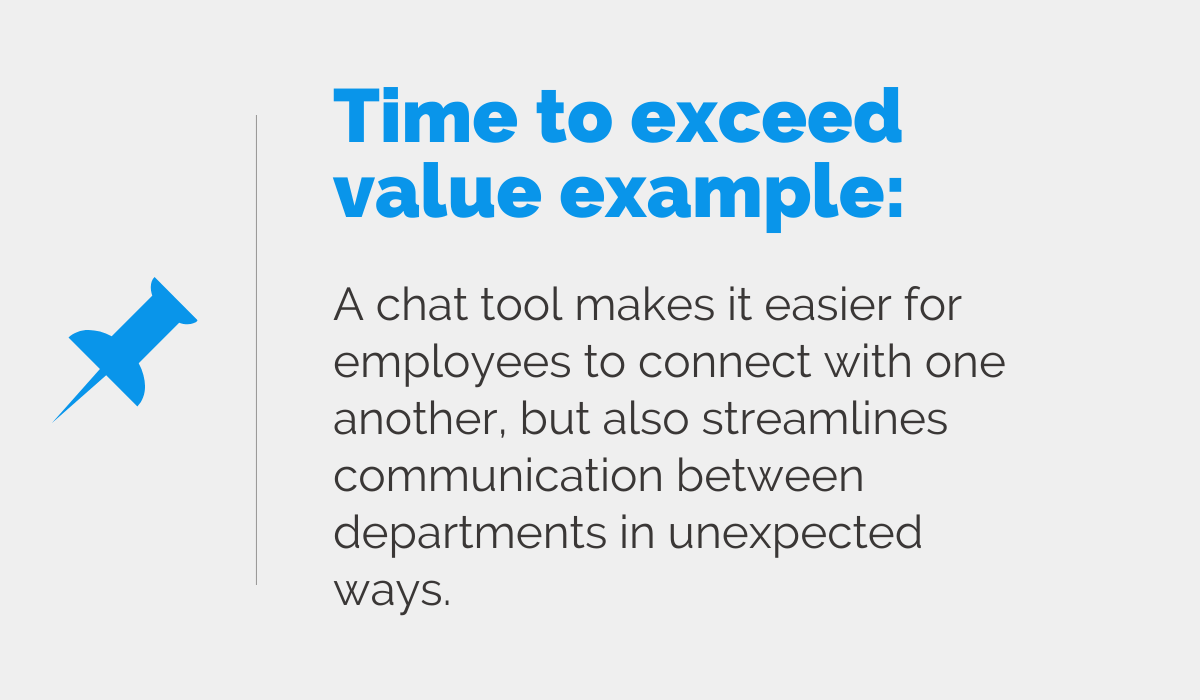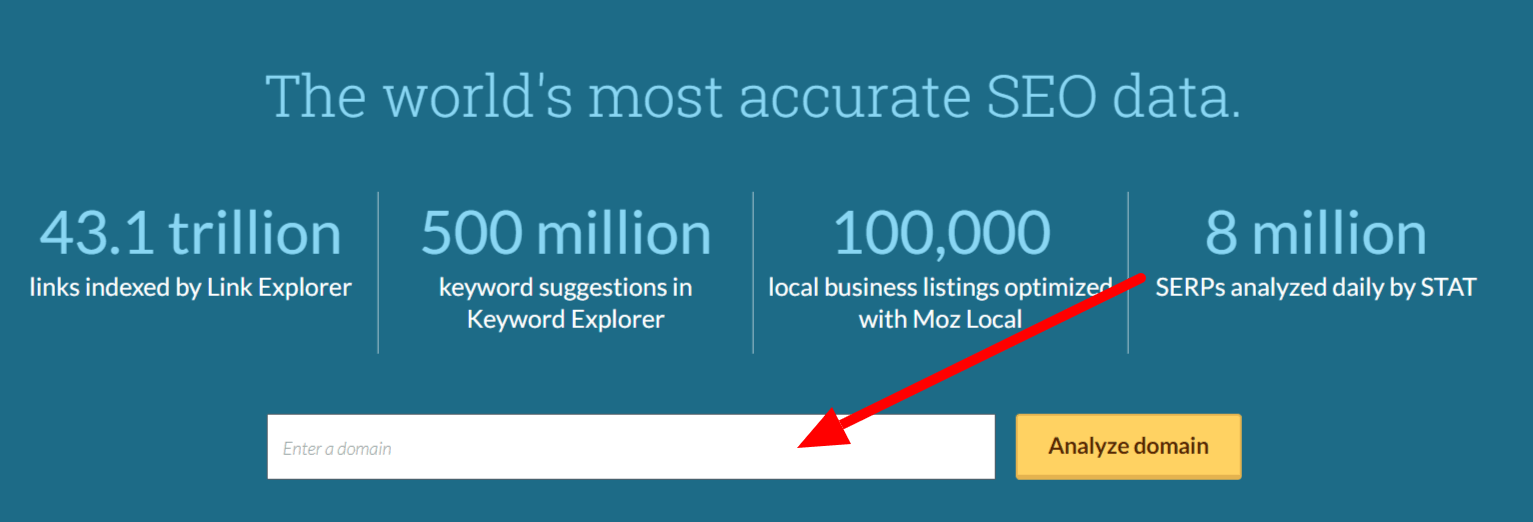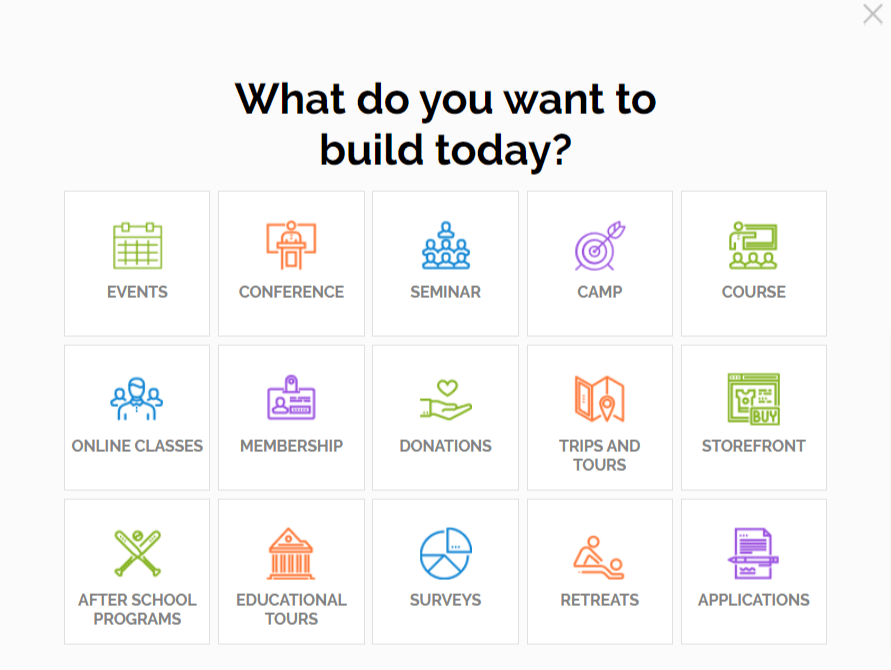You’ve heard the phrase “time is money.” In the SaaS industry, that can literally be the truth.
Customers expect a quick return on their investment and time is key in showing your product’s value. The faster you convince users they’ve made the right decision, the sooner you can reap the benefits. Your time to value needs to be as short as possible.
In this helpful guide, we’ll explain why the time to value metric is essential for any SaaS business and offer you great tips on shortening it.
We don’t have a lot of time, so let’s start.
Table of contents:
What Is Time to Value (TTV)?
Why is Time to Value Important?
Types of Time to Value Metrics
How to Shorten Your TTV
What Is Time to Value (TTV)?
Time to value is the time it takes for a customer to realize that your product works well for them and their needs. It’s one of the key metrics that SaaS companies track, and it’s important to keep this timeframe as short as possible, so you’re more likely to retain a customer.
We can say that TTV starts from the moment your customers purchase your product. This metric is connected to user onboarding since onboarding is the stage in which customers start using the product and seek how it can help them achieve their goals.
If you already convinced someone to pay for using your product, now it’s time to back your words up with perceived value. The sooner you do this, the better your chances of reducing churn.
Have you heard of the Aha! moment? It’s a concept that’s often used in reference to onboarding and determining TTV.
The Aha! moment can be defined as a specific moment during onboarding where the product matches the customer’s expectations. In this sense, Time to Value is the time it takes for customers to reach that moment and find value in your product. Know that there can be multiple Aha! Moments during a customer’s journey.
When it comes to the length of your TTV, that depends on your product and its intended use.
For example, if you’re selling software for creating invoices, your TTV is likely to be quite short, as the customer will see what your product can do for them very quickly.
But on the other hand, if you have analytics software, then your TTV might stretch out for months, as the customer needs time to accumulate enough data before using your product in its full capacity.
Even if your product is complex, you should always seek to provide value to your users as soon as possible.
Why is Time to Value Important?
The main benefit of short time to value is less customer churn.
Churn is the highest in the initial phases of onboarding, but when you make this process seamless and efficient, your TTV will be shorter, and customer satisfaction will increase.
SaaS products are too often feature-rich while having poor onboarding, and not being user-friendly enough.
This is why getting users to quickly see value in your product should be one of your main goals for the onboarding process. It’s your first opportunity to shorten TTV.
Think about it. If your onboarding strategy is about showing value, you can create a better experience for your customers. You will eliminate points of frustration if you look at your product from your customer’s perspective.
Satisfying customers with an enjoyable and useful product does not only result in quick TTV but also positively affects other aspects of your business. By doing so, your customer lifetime value can significantly increase, which later impacts your monthly and annual recurring revenue.
Types of Time to Value Metrics
There are various types of time to value metrics. The time it takes for a customer to realize the value of your product can be measured in six different ways.
They all result in different business benefits and don’t all revolve around customer retention.
We’ll go over these TTV types to show you how varied they can be.
Time to Basic Value
Time to Basic Value is the time it takes for the customer to experience the initial benefits of using your product.
In this stage, the customers haven’t tried all the features, but the early successes show them they’ve made the right choice for trying out your product. This is a hook to get them to stay longer and try out other aspects they haven’t gotten to yet.
Time to basic value can be reached at any point in the initial stage of using your product—such as during free trials or sign-ups. It happens as soon as users see the basic benefits of using your product.
Demonstrating basic value early on provides you with more time to entice customers to fully adopt your product.
Time to Exceed Value
Time to exceed value is the amount of time it takes for the customers to find new levels of value of your product after the initial Aha! moment. We can say this is a step up from time to basic value.
This metric can cement your product adoption because it means that you have exceeded your customer’s expectations.
Time to exceed value can happen at any point of the customer lifecycle, but it’s best if it happens before the free trial ends (if you have free trials) to increase conversion from free trials.

Exceeding expectations leads to increasing the customers’ lifetime value, as they realize they can’t achieve more meaningful goals without your help.
Wowing your customers and showing them they can do much more with your product than expected can also turn them into brand ambassadors and create stronger relationships with your customers.
Immediate Time to Value
When you get your customer to benefit from your products lightning fast, you achieve immediate time to value.
Instant access to your product or some features of it is an excellent way to hook your customers and show them how you resolve their problems. That means immediate time to value often happens without making users sign up to using your product.
If they have no barriers to entry they won’t hesitate to try out something. There’s your chance to wow users and show them how useful your product is.
Some examples of products showing immediate value are:
- Website speed tests
- SEO tools where you can check a website’s metrics by inserting a URL
- Free file conversion tools
- Free calculators
Moz.com is a perfect example of a SaaS company showing immediate value to users. They let users put any domain name into the search bar and analyze it.

Then, if you need more data or want deeper insights, they guide users to opt for a free 30-day trial.

Their strategy is good for multiple reasons. For one, they provide some value instantly. Next, they allow full access to their software for free for 30 days.
That should be enough time for customers to get a grasp of their product and understand its benefits—and become paying customers.
Short Time to Value
A product has a short time to value when you are able to show your customers what you can do for them with quick solutions that make them want more, meaning they don’t churn.
It’s simple: they have a problem, and you fix it. This is one example of a short time to value:
A customer pays for a new SaaS data analytics platform on April 3rd. By April 4th, they have completed the onboarding and have connected their data source, and identified how they will segment data and create their own metrics. On April 4th, they successfully displayed their sales revenue using their new analytics software and can view it by product type, geography, and date of sale. Their time to value is achieved in one day—from April 3rd to April 4th.
Here, customers realize the value of your product very quickly, although not immediately.
Long Time to Value
Although the time to value should be as short as possible, some SaaS products might require more time for customers to realize value. That’s not necessarily a bad thing, but a natural consequence of having a complex product.
Such products usually have a longer time to value, as it simply takes customers longer to adapt to the platform, and to fully integrate it.
Sometimes, products need custom integrations and custom onboarding processes, all of which naturally prolong the time to value period. Or, their own sales cycle prolongs the time needed to see the value.
That doesn’t mean you can’t do your best to minimize TTV. If you take too long to show them value, you can increase their frustration and cause churn. Focus on showing your customers what you can do in the meantime.
Highlight their progress and celebrate minor achievements so they can feel comfortable they made the right choice.
How to Shorten Your TTV
If you implement some of the following tips, especially if you apply them to your customer onboarding process, you will be able to shorten your time to value.
Set up a Goal for Your Users
Goals and milestones will help you guide your users.
When users know what they need to do and how long it will take them to get there, they won’t be as frustrated as if they would have to learn everything by themselves.
You can give them tangible goals to learn about your product and decide if their perceived value matches what they’re experiencing.
Dividing your customers into categories according to their needs should help you determine the specific goals you want each of them to achieve. Here’s an example:

That way, you can ensure you’re not guiding them wrong. Instead, you’ll manage their TTV effectively, demonstrating the rewards of using your product in the shortest amount of time.
One way to set up goals is to use onboarding checklists to provide visual feedback. There should be quick opportunities for users to reach multiple small Aha! moments that will spur them into finally realizing the core value of your product.
Focus on the benefits your customer expects and only show the features that will shorten their TTV.
Improve Your User Interface
User experience increases when you have a great product design, and you shouldn’t overlook the effect of a good user interface on the user’s perception of value.
You have to make the best possible first impression when users get introduced to your product. They have to be able to navigate the product seamlessly and reach their first milestone quickly.
When you thinking about UI, keep the following three things in mind:
- Simplicity: minimalist design is your best friend, so it’s best to rely on the essentials. Your buttons should be adequately labeled and the menus short and understandable.
- Personalized content: if your product has a quirky name or caters to a niche audience, leverage that in your design.
- Memorable product: showcase your branding voice and personality. In a sea of similar products, show your uniqueness by creating interesting empty states or chatbots.
You can use your creativity to design an engaging product without interfering with a product’s usability. Here’s an example from Duolingo.

The simplicity of their UI stands out, and their product is memorable, with a distinctive colorful background.
Overall, you can help your customers reach value faster with a clean and attractive UI.
Personalize Onboarding
With SaaS products, the onboarding process is at the heart of creating a personalized experience, which means you can drastically shorten TTV if you personalize every aspect of your onboarding process.
The onboarding process involves everything you need to get your customer familiar with your product, like product walkthroughs, checklists, supporting guides, knowledge bases, customer support, etc.
But if you want to take it to another level, don’t forget onboarding emails.
Welcome emails are essential to get them started, and after that, you can send them follow-ups about new tips on how to use your product.
Onboarding emails are a great opportunity to showcase your product’s value further. You can’t show users everything in your product during their initial walkthrough so you can use emails to point out features they might benefit from.
Here’s an example from Asana:

Just keep in mind that timing is essential, even for emails. Their frequency can both improve or damage your TTV, so plan your emails according to the customer’s preferences.
Third-party solutions can help you automate this process, saving you time and effort.
Identify and Remove Friction
If you want to be effective in identifying the main points of friction customers encounter when using your product, you need to test it regularly.
Your first step is to monitor how the customers use your product. Only then will you know which features they rely on most. Also, data might tell you why users take longer to complete certain tasks or detect what they’re doing wrong when they interact with your product.
If you notice similar patterns, don’t hesitate to survey the users about their experience. This should provide you with additional information that can solve their problems and shorten TTV in the long run.
Create Levels of Product Adoption
You might think that the best way to demonstrate value and make sure your users adopt the product quickly is to show your customers every possible feature as soon as possible, but you’d be wrong. In fact, doing so would have the opposite effect.
Instead, approach product adoption and TTV in the same way you would teach someone to swim. First, you have to get them into the water, then teach them how to float to make them feel safe, and finally, show them how to move their arms and legs to move forward.
The same applies to product adoption—you should show your product’s value in intervals.
Your product adoption plan should similarly be conducted in stages. Getting the users to sign up is the first step, then you have to show them the first key features to get them comfortable using your product.
Once they know the basics, you can teach them how to use the more complex features to achieve their goals.
They should also be able to understand how each step leads to the next, so tailor each stage to their knowledge levels. The more they learn, the easier it will be for them to make further progress independently.
Maintain High-Touch Engagement
If time to value is all about your customers reaching their goals as fast as possible, then it stands to reason that you need the right customer success team to help them with that.
It’s impossible to reach every customer personally, especially if you have a large customer base, but you can do everything in your power to optimize their product experience, especially in those initial stages.
Customers must have a point of contact where they can get answers to their questions. When they’re getting familiar with your product, it helps to have someone to highlight useful features to them.
This should ensure a smooth onboarding process. A customer success representative further personalizes the experience, as their suggestions are tailored to a customer’s specific needs.
Having people back users on their journey shortens the time to value.
Implement User Training Programs
Customers who understand how a product works will reach value sooner, and 70% of them consider this an important factor in choosing who they do business with.
Providing your customers with checklists and tooltips is base-level guidance towards using your product. However, to maximize their effects, you have to provide additional resources. Provide multiple methods of transferring knowledge, such as videos, PDFs, and podcasts.
Another solution for user training is a Digital Adoption Platform (DAP). These platforms are a great multi-feature solution that integrates everything for smooth product adoption. They include product walkthroughs, tutorials, comprehensive knowledge bases, and self-help FAQs.
With DAPs, customers can find answers and learn about your product independently, which almost 60% of them find preferable to contacting customer support.
Why not use those readily available solutions to eliminate friction in your user onboarding process? Customers need a variety of options to rely on when they hit a roadblock.
Shorten Your Free Trial
Most free trials for SaaS products last 14 to 30 days. This is the optimal timeframe for the customer to get introduced to the product’s essential features and understand its value.
With a long free trial, there is a risk of the customers not using the product as much as they could, safe in the knowledge that ‘they “have plenty of time to try it out.’’
As a result, most of them stop using the product after the first few days and end up not even fully trying it, which results in higher churn rates. On the contrary, short free trials encourage customers to start using your product immediately.
And here’s an example of what happens when you shorten your free trial.
ProdPad used to offer a 30-day free trial, but they noticed their customers realized the value of their product by day 9 and were ready to pay.

So, they cut their free trial period to 7 days and maximized their efforts to show value to their customer in the first session of using their product.
The result?
They tripled their overall conversion rate from free trials.
Shorter trials incentivize users to try out all of your product’s features and shorten their TTV.
Optimize Your Pricing
The customer’s perception of value starts with looking at your pricing. They evaluate how it stands against other similar products in the niche and if your offering justifies the listed price.
So, even if your product can potentially solve users’ problems and help them achieve their goals, they might be skeptical of the true value of your product if it’s under or overpriced.
Therefore, it’s important to implement a value-based pricing model.
Setting a value-based price is challenging because it requires asking for just the highest amount the customers are willing to pay for your product, meaning that you have to set a value on something only your customers perceive.
Without thorough research and market analysis, you won’t be able to understand the relationship between value and your product.
So, how do you determine how much value can your customers gain from your product?
You can use value metrics related to your product. Depending on what you offer, such metrics can include gigabytes of data, emails sent, or even the seats at an event.
When you determine what you can offer your customers, you can price it accordingly and maximize your profits.
Finally, after you set the optimal price, you need a good solution to get paid. Regpack can help you automate your billing and user management.
Conclusion
Time to value might seem complicated at first, but it boils down to putting yourself in your customer’s shoes and helping them reach their goals fast.
Once you understand the basics, it’s not too hard to adopt the right strategies to minimize this metric.
An effective onboarding process is an excellent starting point. But also, work to improve the way you educate your customers, shorten your free trial, and provide hands-on support to eliminate friction.
Your customers will be able to understand what your product can do for them quickly. And that’s the first step towards securing their loyalty!


















